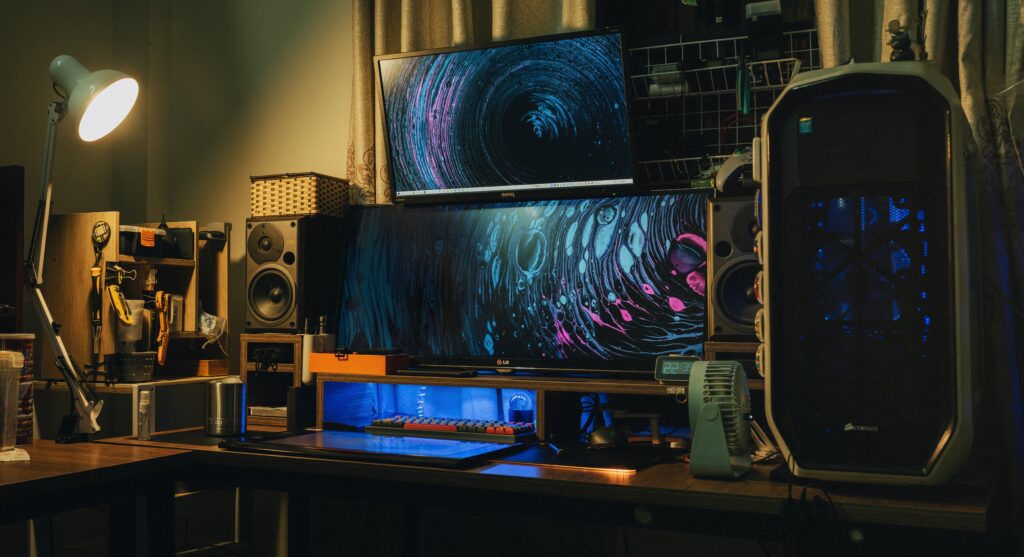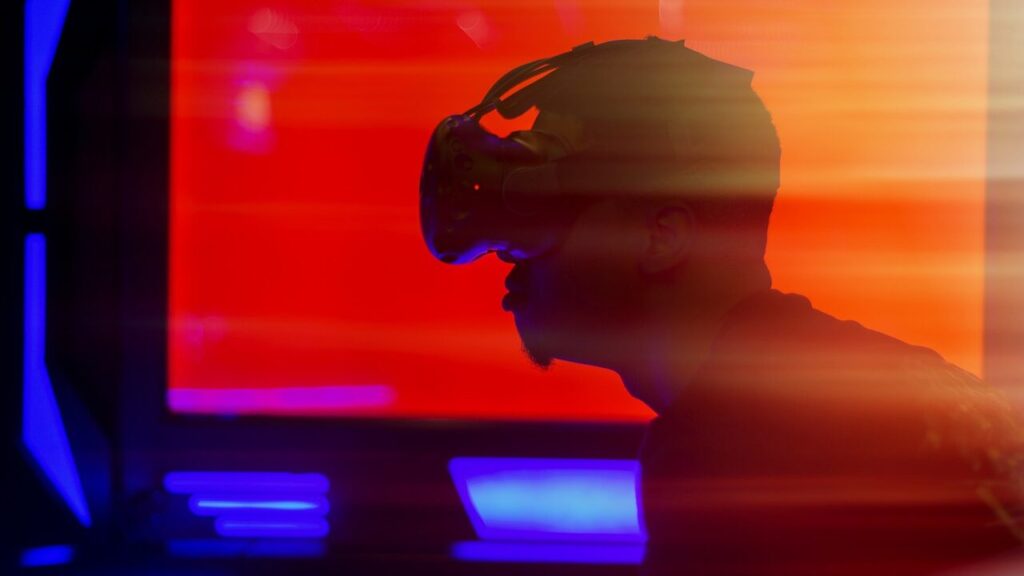
The universe of gaming has seen astonishing changes consistently, to the extent that interactivity and narrating as well as in the space of designs. From the outset of pixel art to the cutting-edge development of beam following, gaming illustrations have advanced essentially, changing the visual experience for players. In this article, we will investigate the development of gaming illustrations, featuring the significant achievements and headways that have formed the business.
Introduction
Gaming graphics assume an important part in making vivid and enrapturing virtual universes. The advancement of graphics development has been driven by the mission of genuineness and the desire to stretch the boundaries of visual fidelity. Let’s delve into the fascinating journey that gaming graphics have undertaken.
The Early Days of Gaming Graphics
The Rise of Pixel Art in Gaming
At the beginning of gaming, graphics were portrayed by pixel workmanship, which included making visuals utilizing little, square-molded pixels. This artistic expression acquired ubiquity because of its effortlessness and nostalgic allure. Games like Pac-Man and Space Trespassers displayed the appeal of pixelated designs, charming players around the world.
Limitations of Early Graphics Technology in Gaming
Some time ago, gaming graphics were thwarted by equipment limits. Control centers and PCs had restricted handling power and memory, which brought about low-goal illustrations and restricted variety ranges. Notwithstanding, game designers actually figured out how to convey extraordinary gaming encounters by pushing the limits of imagination.
Advancements in Gaming Graphics
Introduction of 3D Graphics in Gaming
As innovation progressed, the presentation of 3D illustrations denoted a huge defining moment in gaming. Three-layered designs took into account the production of additional practical and vivid conditions. Games like Super Mario 64 and Burial Chamber Marauder exhibited the capability of this new wilderness, catching the minds of players around the world.
Polygonal Models and Textures
With the appearance of 3D illustrations, engineers started using polygonal models to address articles and characters in games. These models were additionally upgraded with surfaces, which added profundity and detail to the visuals. The utilization of polygons and surfaces made it ready for additional complex and outwardly engaging game universes.
Shading and Lighting Techniques
To improve the realism of gaming graphics, developers introduced shading and lighting techniques. Concealing included recreating the cooperation of light with objects, bringing about practical features, shadows, and slopes. This procedure added profundity and aspect to the visuals, improving the general submersion.
Introduction of Anti-Aliasing
One of the difficulties looked at by mid-3D illustrations was the presence of barbed edges, known as associates. To conquer this issue, hostile associating procedures were presented. Associating streamlined the rugged edges, bringing about smoother and more refined visuals. This headway essentially improved the visual nature of games and added to a more clean and vivid gaming experience.
The Emergence of Realistic Graphics
Introduction of Physically Based Rendering PBR
As of late, gaming illustrations have seen a shift towards genuinely based delivery (PBR). PBR recreates the way of behaving light in a more practical way, considering elements like material properties, surface unpleasantness, and ecological lighting conditions. This approach brings about more precise and similar visuals, carrying games nearer to the real world.
High Dynamic Range HDR Imaging
One more leap forward in gaming designs has been the reception of High Unique Reach (HDR) imaging. HDR grows the scope of varieties and differences that can be shown, bringing about more lively and outwardly shocking visuals. This innovation adds profundity and wealth to game universes, making a seriously captivating and spellbinding experience for players.
Global Illumination and Ambient Occlusion
The techniques that contribute to the overall lighting realism in games is global illumination and ambient occlusion. Global illumination simulates the indirect bouncing of light, resulting in more realistic lighting and shadows. Ambient occlusion, on the other hand, enhances the perception of depth by simulating the occlusion of light in crevices and corners. These techniques greatly enhance the visual quality and immersion of game environments.
Real-Time Ray Tracing
Continuous beam following has been the main advancement in game designs lately. Beam following is a delivering procedure that mimics the way of behaving of light beams, taking into consideration unimaginably practical reflections, refractions, and worldwide brightening. This innovation reforms the visual loyalty of games, making virtual universes look practically indistinct from the real world.
The Impact of Realistic Graphics on Gaming
Enhanced Immersion and Realism
Practical illustrations significantly affect the inundation and authenticity of gaming encounters. Players can now investigate outwardly dazzling and profoundly nitty gritty conditions, which makes an increased feeling of presence inside the game world. Sensible illustrations permit players to feel more associated with the computer-generated experience and connect all the more profoundly with the account and interactivity.
Evolving Gameplay Experiences
The development of gaming designs has worked on visual devotion as well as affected interactivity encounters. Sensible illustrations empower designers to make more powerful and intelligent universes, with physical science reproductions and similar activities. These headways open up additional opportunities for ongoing interaction mechanics and narrating, furnishing players with additional drawing-in and critical encounters.
Increased Hardware Demands
The pursuit of realistic graphics comes with increased hardware demands. As games become all the more outwardly perplexing, they require strong equipment to run as expected and convey the planned visual experience. This has driven the progression of illustrations cards, processors, and other gaming equipment parts, pushing the limits of mechanical advancement.
Future Trends in Gaming Graphics
Advancements in Ray Tracing Technology
Ongoing beam following is still in its beginning phases, and future headways in this innovation hold extraordinary commitment. Proceeding with enhancements in equipment and programming will probably prompt much more practical and vivid gaming encounters. The reconciliation of beam following with other delivering strategies will additionally upgrade the visual nature of games, making virtual universes more similar than at any time in recent memory.
Virtual Reality VR and Augmented Reality AR
Over the long run, the gaming business has seen colossal changes as far as feel as well as ongoing interaction and storyline. From the beginning of pixel craftsmanship to the state-of-the-art innovation of beam following, gaming designs have made some amazing progress, changing the visual experience for players. This article will look at the improvement of game illustrations, featuring critical defining moments and innovative advances that have impacted the area.
Machine Learning and Procedural Generation
ML and PG can possibly upset gaming illustrations later on. AI calculations can be utilized to produce exceptionally nitty gritty surfaces, activities, and character models, diminishing the requirement for manual resource creation. Procedural age methods can make tremendous and various game universes with insignificant human information, taking into account vast conceivable outcomes and novel encounters. These headways will empower engineers to make outwardly staggering games effectively and push the limits of innovativeness.
Conclusion
The development of gaming designs from pixel art to beam following has been a striking excursion, driven by mechanical progressions and the quest for authenticity. From humble starting points with pixelated visuals to the amazing authenticity of ongoing beam following, gaming designs have ceaselessly pushed the limits of visual devotion and drenching. The effect of sensible illustrations on interactivity encounters and player commitment couldn’t possibly be more significant. As innovation keeps on propelling, we can expect significantly seriously dazzling and vivid gaming encounters from now on.
FAQs
1. What is pixel art, and for what reason was it famous in early games? Pixel art alludes to the craftsmanship style that utilizes little, square-molded pixels to make visuals. It acquired fame in early games because of its effortlessness, nostalgic allure, and the specialized impediments of equipment around then.
2. How did anti-aliasing improve gaming graphics? Hostile associating methods smooth out rugged edges in designs, bringing about a more refined and outwardly satisfying appearance. It altogether works on the visual nature of games by diminishing associating ancient rarities.
3. What is genuinely based on delivering PBR, and for what reason is it significant for gaming illustrations? Truly based delivering is a delivering procedure that mimics the way of behaving of light in a genuinely exact way. It considers factors like material properties and natural lighting conditions, bringing about more practical and similar visuals in games.
4. How does real-time ray tracing revolutionize gaming graphics? Continuous beam following is a delivering method that reenacts the way of behaving of light beams progressively. It empowers unbelievably practical reflections, refractions, and worldwide light, pushing the visual constancy of games higher than ever and making virtual universes look practically unclear from the real world.
5. What impact do realistic graphics have on gameplay experiences? Realistic graphics enhance immersion and realism in gameplay experiences. Players feel more associated with the virtual world and connect all the more profoundly with the story and ongoing interaction mechanics. Reasonable illustrations likewise open up additional opportunities for dynamic and intelligent game universes, improving the generally ongoing interaction experience.


